1: You come across a moose on a nature trail. What do you do?

The answer is C
Keep your distance and appreciate the moose in its natural habitat from afar.
As cute as moose can be, they can be cranky around humans and appreciate being left alone (kind of like you before your first cup of coffee in the morning). This applies to most wildlife. If you spot a wild animal, give them space while you take a photo and quietly continue on your way. As a best practice, you should stay at least 75 feet away from moose, deer and most wildlife. Double that distance to 150 feet for bears and wolves.
2: You and your crew are ripping it up on the ATV trails. You pass an open gate a few miles in and suddenly find yourself surrounded by cattle. What’s the deal?
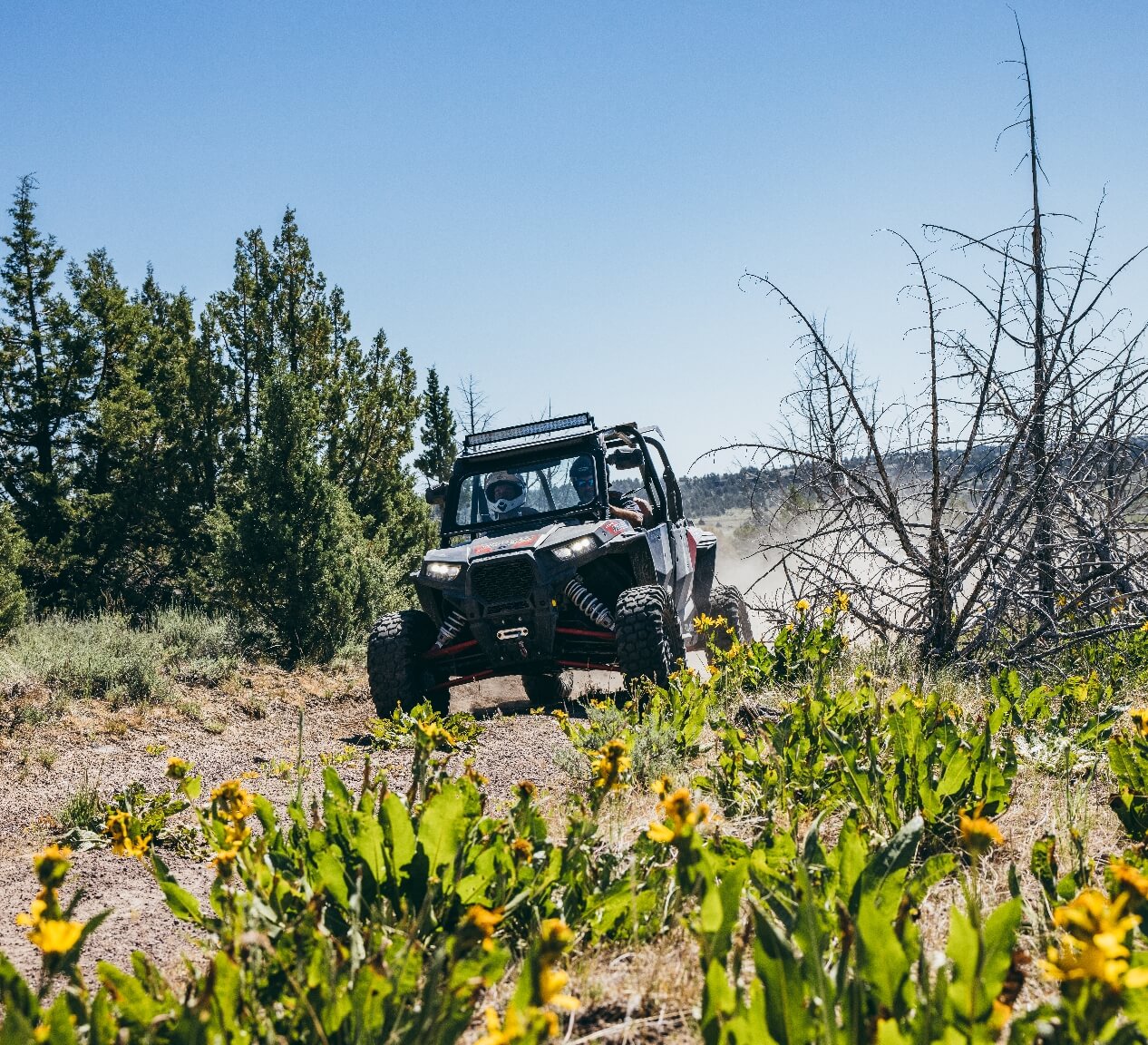
The answer is B
You’ve likely stumbled upon livestock grazing on public land.
You may have ended up on public land that allows grazing leases to local ranchers. No worries! The cows are just getting their grub on and catching some Zs, and you’re good to keep on riding. If a gate is open, leave it open; if a gate is closed, ride through and close it behind you. If a gate is posted no trespassing, do not enter. Remember to plan your route before you hit the trails and stay on public lands designated for recreational use. If you’re not sure where to start, contact the local Bureau of Land Management office at blm.gov/idaho, which can provide maps and information for your ATV adventure.
3: Before you hit the hay, how should you put out your campfire?

The answer is C
Give it some good old-fashioned H2O.
Do Smokey Bear proud by drowning that fire with plenty of water. Follow these tips to properly extinguish your fire: Ideally, let the wood burn completely to ash. Next, douse it with water. You’ll know it’s completely out when the hissing stops. If you don’t have enough water, stir in dirt or sand to extinguish the fire and bury the embers.
4: You’ve lucked out and discovered the most beautiful, secluded camping spot. However, there is no existing fire ring. Can you still build a fire?
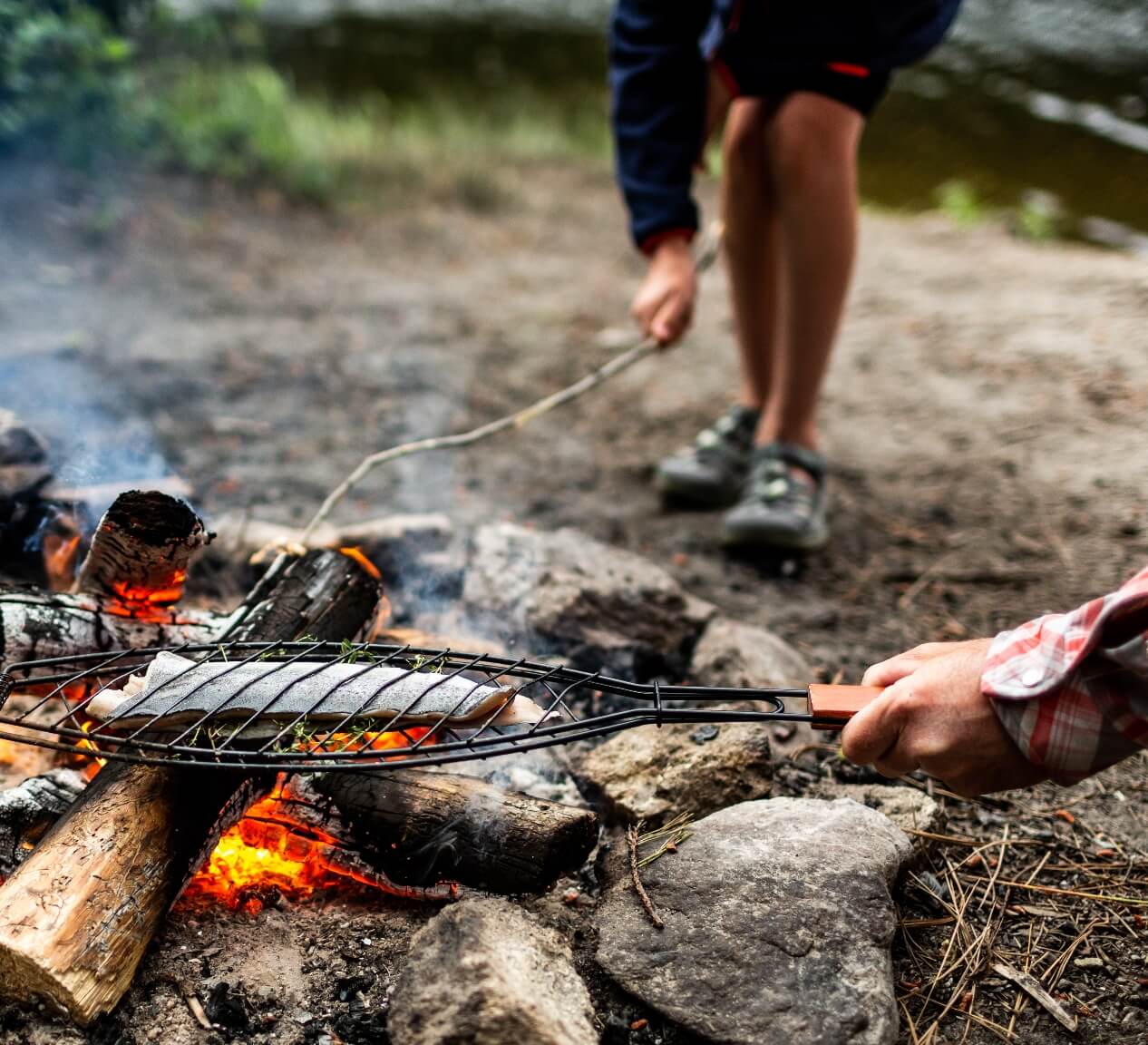
The answer is B
Maybe, but maybe not!
If there are no fire restrictions in place for your area, you can build a low-impact campfire in a fire pan or on a fire blanket. Be sure to research the best practices for using these tools. Also, before you head out on your trip, always check—and follow—the campfire restrictions in the area you’ll be visiting at idahofireinfo.com.
5: It’s time for the annual family summer camping trip, and you’re headed to your trusty, go-to spot. When you arrive, somebody’s already there. What do you do?
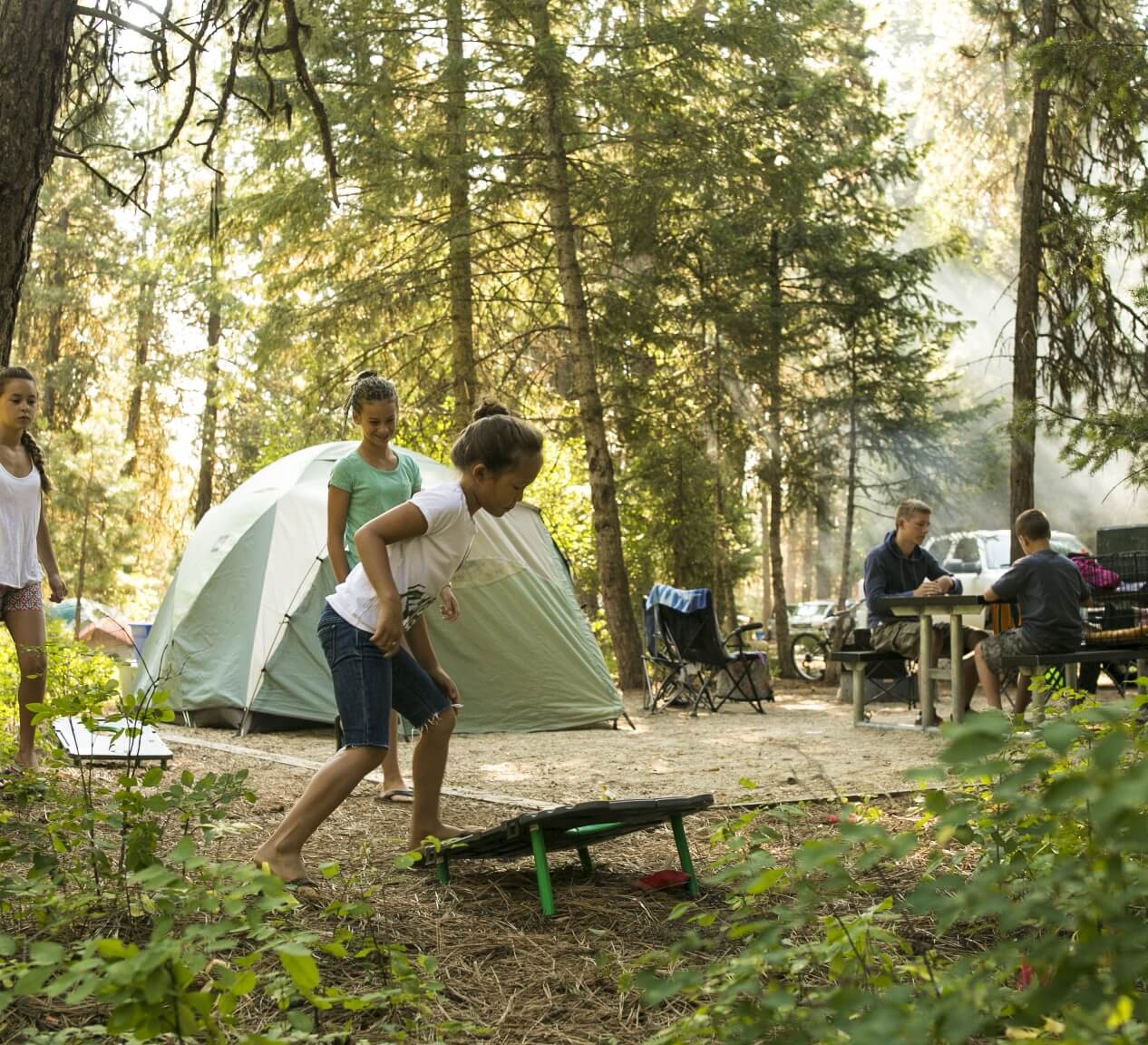
The answer is C
Search for another spot that is still available.
Campsites are either first come, first served or by reservation. Even if they are cool cats, the other campers got there first and deserve to enjoy it peacefully. If you’re flexible about your campsite, you can likely find another option nearby. For future visits, plan ahead by reserving the spot, if possible, or arrive early enough to claim it. Most importantly, always have a backup plan.
6: You’ve waited all week to hike into your favorite fishing spot on a Saturday morning, but when you get there, another angler is already fishing that hole. How do you proceed?
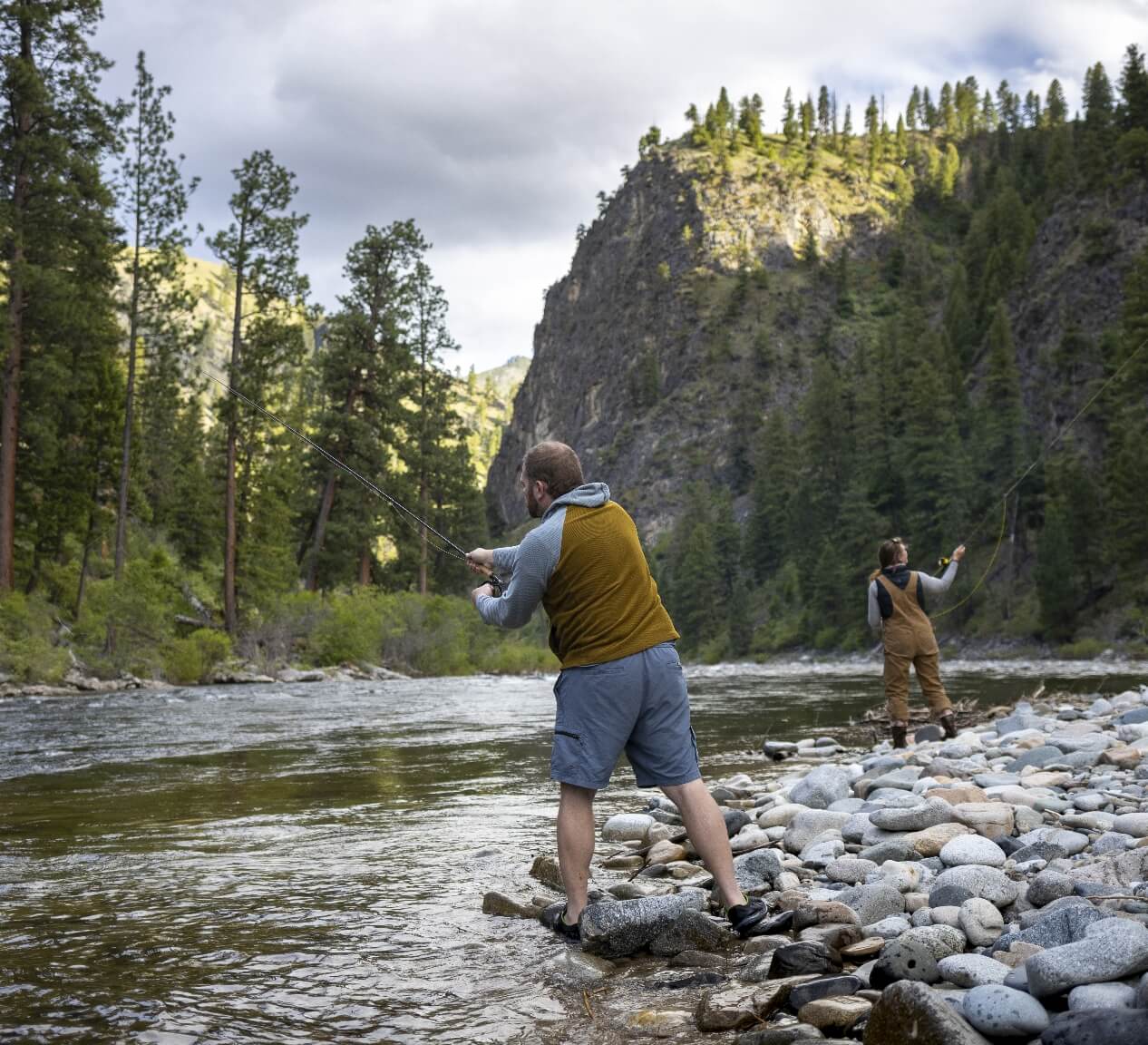
The answer is A
Don’t be a low- or high-holer. Give your fellow angler space and fish further up- or downstream.
Fishing close to another angler who arrived at a spot first is widely frowned upon. If your ideal spot is already taken, the right thing to do is to find a spot a good distance away to cast your line.
7: You’re hiking a new trail with a friend, and they suddenly veer off the path and say, “Hey, let’s go this way instead.” They seem confident they know a better way to get to your destination. Which path do you choose?
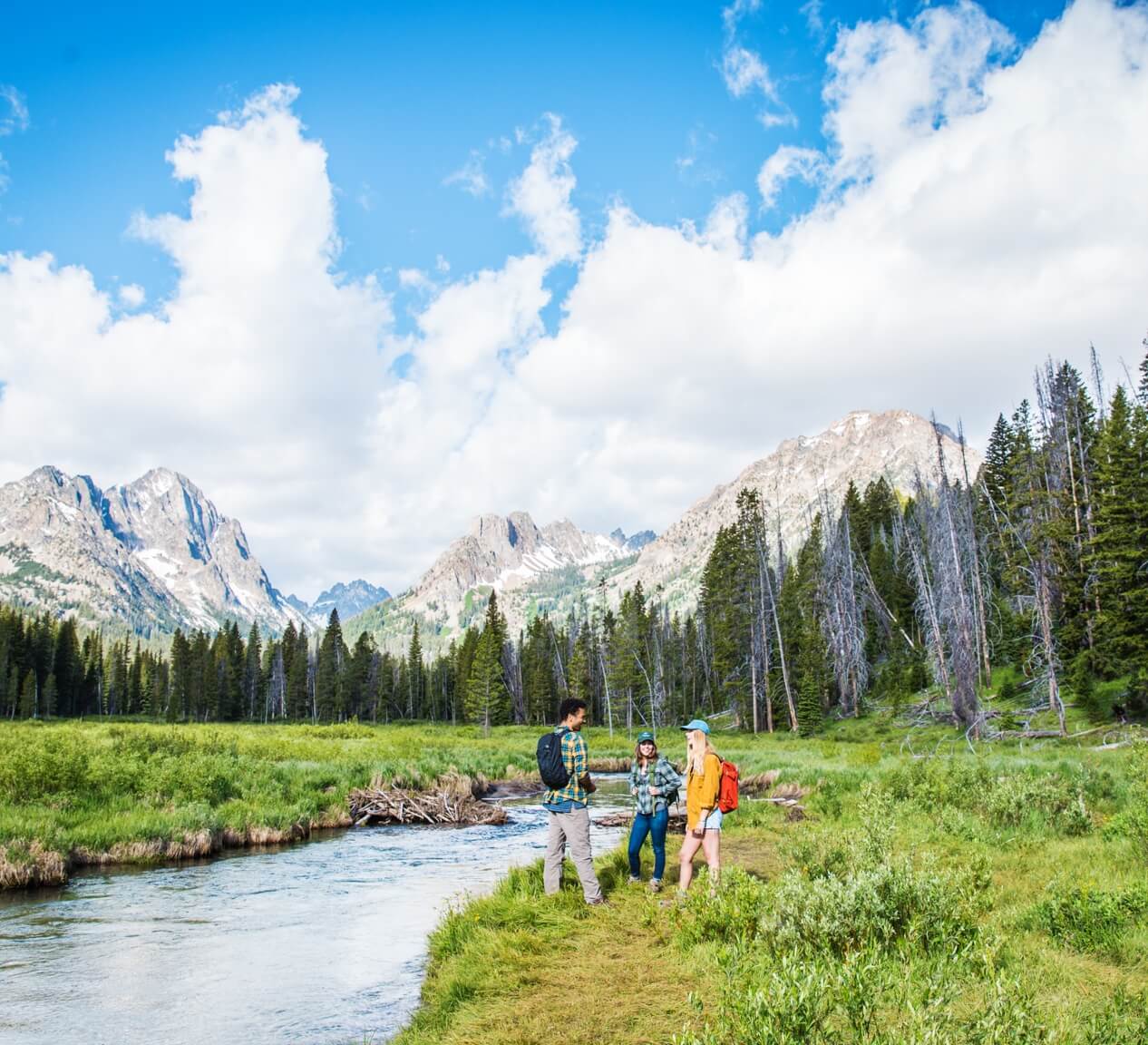
The answer is B
Stay on the designated trail. No need to fix what isn’t broken.
While the mystery of the road less traveled may be intriguing, it’s not the proper route when hiking responsibly. Designated trails are established to not only keep you safe but to also protect the flora and fauna of the area. Help preserve the natural environment by staying on course.
8: You’re out cruising around on your ATV when the clearly defined road you’re on abruptly stops. Upon closer inspection, you notice faint tracks from other riders continuing up a hill. Should you follow the tracks?

The answer is C
No way. If it’s not a clearly designated trail, it’s not worth driving on.
Riding off-trail gives ATV riders a bad name. Idaho’s public lands are shared across a variety of users and uses, and each area is defined to help keep everyone safe and access open for all. The U.S. Forest Service provides Motor Vehicle Use Maps to explain which roads and trails are open.
9: You’ve just bought your first kayak and are ready to take it out on the river. When you arrive, the launching area is packed with boats and other people, and you just can’t wait that long. What can you do?

The answer is B
Head a little way further down the river to find a quieter place to launch.
The beauty of portable watercraft like kayaks, paddleboards and smaller rafts is the flexibility they provide. They don’t require the same launching space that larger boats do, so you can simply hop in and go!
10: It’s Sunday afternoon, and you’re packing up camp after a fun weekend in the great outdoors. Your crew has produced a large bag of trash, but there’s no garbage can in the restroom and no dumpster nearby. What should you do with the bag?

The answer is C
Load the bag in your car, and then dump it at the nearest public dumpster or take it home.
One of the key principles of enjoying the outdoors is to pack out what you pack in. That includes any garbage from food, packaging or equipment you no longer need. There may be no trash service at a remote camping site, so it’s your responsibility to ensure it gets properly disposed.


